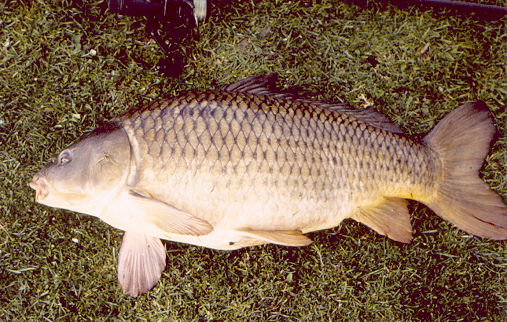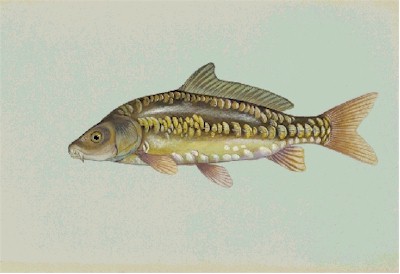|
|
|

CARP (cyprinidae)
The wild carp was being farmed for food in Asia about 400 BC. Since then, selective breeding on eastern European fish farms has produced a number of variants such as the common, leather, and mirror forms. These and wild carp have spread throughout Europe both naturally and by introduction, and have been introduced elsewhere, including North America and Australia.
FISHING NOTES.
Techniques: Float fishing, ledgering and freelining.
Tackle: Float fishing, use a 3.7m (12ft), 680g (1.5lb) test curve rod with a fixed spool reel, 3.6kg (8lb) line, and hook sizes 8 to 12. Ledgering calls for heavier tackle, for instance a 3.7m (12ft), 910g (2lb) test curve rod, fixed spool reel, 5.4kg (12lb) line, and hook sizes 6 to 10.
FEEDING.
Carp feed at the surface, on the bottom, or in midwater on plants, algae, snails, worms, insects larvae, shrimps, mussels, and many other organisms. It opens its mouth wide and sucks its food in like a vacuum cleaner, and often rummages through the bottom detritus, sending up clouds of silt and uprooting plants.
Wild Carp (Cyprinus carpio).
The wild carp is a strong, slow-growing fish with a scaleless head and a fully scaled body. Smaller and less deep-bodied than the common carp, it's average weight is 910g to 2.27kg (2 to 5lb) and it seldom exceeds 9.1kg (20lb).
Common (or King) carp (Cyprinus carpio).
The heave,deep-bodied common, or king, carp, together with it's Leather and Mirror varieties, is the result of centuries of selective breeding by farms. Like the wild carp from which it derives, the common carp has a scaleless head and a fully scaled body, and it's colouration is varied. It can reach a weight of 36kg (80lb) and a length of about 1.5m (5ft).
Mirror carp, Fully scaled, Linear, Scattered and Plated, (Cyprinus carpio).

The mirror variety of common carp occurs in a number of forms. The fully scaled is covered in large, irregular scales; the scattered has individual randomly sited scales; the linear has a continuous line of scales along the lateral line; and the plated has just a few very large scales along the lateral line.
Leather carp (Cyprinus carpio).
The scaleless or almost scaleless leather carp is a variety of common carp. Any scales that are present are large and few in number, and usually near the fins and tail. Like the common and mirror varieties, it has been introduced around the world.
Crucian carp (Cyprinus carpio).

This small, deep bodied carp is more closely related to the goldfish than to wild carp, but will interbreed with both species. It averages about 255g (9oz), but can exceed 2.5kg (5lb 8oz), and it will tolerate a wide range of temperatures, low oxygen levels, acidity and dense vegetation.